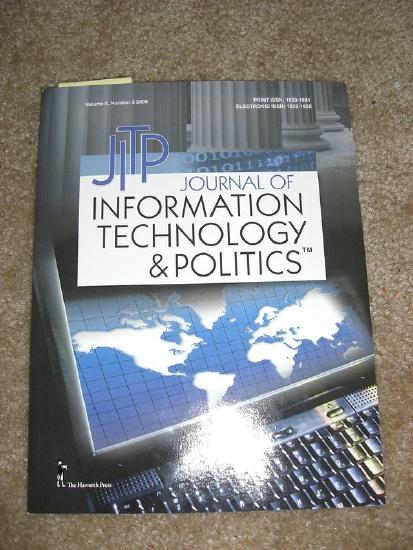Getting Familiar with Academic Journal Articles

Most of the Tier 1 sources available are academic articles, also called scholarly articles, scholarly papers, journal articles, academic papers, or peer-reviewed articles. They all mean the same thing: a paper published in an academic periodical after being scrutinized anonymously and judged to be sound by other experts in the subfield. Their origin explains both their basic structure and the high esteem they have in the eyes of your professors.
Many journals are sponsored by academic associations. Most of your professors belong to some big, general one (such as the Modern Language Association, the American Psychological Association, the National Association for Sport and Physical Education, or the American Physical Society) and one or more smaller ones organized around particular areas of interest and expertise (such as the Association for the Study of Food and Society, the International Association for Statistical Computing, or the Slavic and East European Folklore Association). There are also generalist organizations organized by region of the country or state, such as the Eastern Sociological Society or the Southern Management Association. Each of these associations exists to promote the exchange of research findings and collaboration in their disciplines. Towards this end, they organize conferences, sponsor working groups, and publish one or more academic journals. These journals are meant to both publicize and archive the most interesting and important findings of the field.
Academic papers are essentially reports that scholars write to their peers—present and future—about what they’ve done in their research, what they’ve found, and why they think it’s important. Thus, in a lot of fields they often have a structure reminiscent of the lab reports you’ve written for science classes:
- Abstract: A one-paragraph summary of the article: its purpose, methods, findings, and significance.
- Introduction: An overview of the key question or problem that the paper addresses, why it is important, and the key conclusion(s) (i.e., thesis or theses) of the paper.
- Literature review: A synthesis of all the relevant prior research (the so-called “academic literature” on the subject) that explains why the paper makes an original and important contribution to the body of knowledge.
- Data and methods: An explanation of what data or information the author(s) used and what they did with it.
- Results: A full explanation of the key findings of the study.
- Conclusion/discussion: Puts the key findings or insights from the paper into their broader context; explains why they matter.
Not all papers are so “sciencey.” For example, a historical or literary analysis doesn’t necessarily have a “data and methods” section; but they do explain and justify the research question, describe how the authors’ own points relate to those made in other relevant articles and books, develop the key insights yielded by the analysis, and conclude by explaining their significance. Some academic papers are review articles, in which the “data” are published papers and the “findings” are key insights, enduring lines of debate, and/or remaining unanswered questions.
Scholarly journals use a peer-review process to decide which articles merit publication. First, hopeful authors send their article manuscript to the journal editor, a role filled by some prominent scholar in the field. The editor reads over the manuscript and decides whether it seems worthy of peer review. If it’s outside the interests of the journal or is clearly inadequate, the editor will reject it outright. If it looks appropriate and sufficiently high quality, the editor will recruit a few other experts in the field to act as anonymous peer reviewers. The editor will send the manuscript (scrubbed of identifying information) to the reviewers who will read it closely and provide a thorough critique. Is the research question driving the paper timely and important? Does the paper sufficiently and accurately review all of the relevant prior research? Are the information sources believable and the research methods rigorous? Are the stated results fully justified by the findings? Is the significance of the research clear? Is it well written? Overall, does the paper add new, trustworthy, and important knowledge to the field? Reviewers send their comments to the editor who then decides whether to (1) reject the manuscript, (2) ask the author(s) to revise and resubmit the manuscript, or (3) accept it for publication. Editors send the reviewers’ comments (again, with no identifying information) to authors along with their decisions. A manuscript that has been revised and resubmitted usually goes out for peer-review again; editors often try to get reviews from one or two first-round reviewers as well as a new reviewer. The whole process, from start to finish, can easily take a year, and it is often another year before the paper appears in print.

Understanding the academic publication process and the structure of scholarly articles tells you a lot about how to find, read and use these sources:
- Find them quickly. Instead of paging through mountains of dubious web content, go right to the relevant scholarly article databases in order to quickly find the highest quality sources.
- Use the abstracts. Abstracts tell you immediately whether or not the article you’re holding is relevant or useful to the paper you’re assigned to write. You shouldn’t ever have the experience of reading the whole paper just to discover it’s not useful.
- Read strategically. Knowing the anatomy of a scholarly article tells you what you should be reading for in each section. For example, you don’t necessarily need to understand every nuance of the literature review. You can just focus on why the authors claim that their own study is distinct from the ones that came before.
- Don’t sweat the technical stuff. Not every social scientist understands the intricacies of log-linear modeling of quantitative survey data; however, the reviewers definitely do, and they found the analysis to be well constructed. Thus, you can accept the findings as legitimate and just focus on the passages that explain the findings and their significance in plainer language.
- Use one article to find others. If you have one really good article that’s a few years old, you can use article databases to find newer articles that cited it in their own literature reviews. That immediately tells you which ones are on the same topic and offer newer findings. On the other hand, if your first source is very recent, the literature review section will describe the other papers in the same line of research. You can look them up directly.
Students sometimes grumble when they’re ordered to use scholarly articles in their research. It seems a lot easier to just Google some terms and find stuff that way. However, academic articles are the most efficient resource out there. They are vetted by experts and structured specifically to help readers zero in on the most important passages.
Practice Exercise \(\PageIndex{1}\)
Enter a topic into a general subscription database that has both scholarly and non-scholarly sources (such as Academic Search Complete or Academic OneFile); browse the first few hits and classify each one as scholarly or not-scholarly. Look at the structure of the piece to make your determination.
Chapter Attribution
The material in this chapter is from "Forming a Research-Based Argument" in How Arguments Work: A Guide to Writing and Analyzing Texts in College by Anna Mills under a CC BY-NC 4.0 license.
In turn, that chapter included this attribution:
Adapted by Anna Mills from Writing in College: From Competence to Excellence by Amy Guptill, published by Open SUNY Textbooks, licensed CC BY NC SA 4.0.

